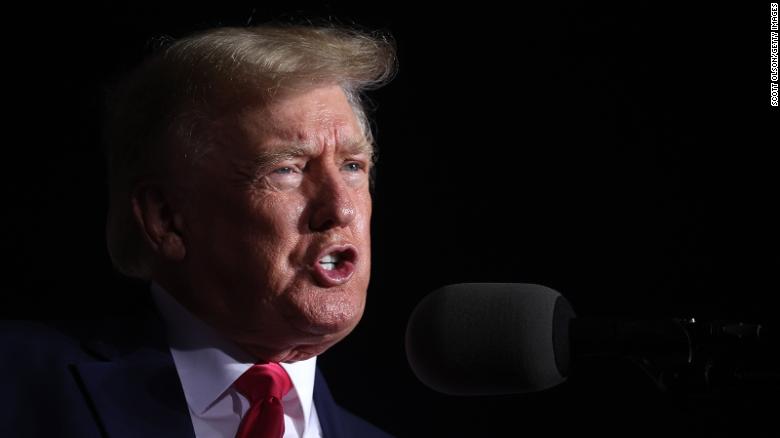To be or not to be, that is the question when it comes to former President Donald Trump’s potential 2024 presidential campaign.
The man who used to occupy the Oval Office has been holding rallies and endorsing candidates across the country this primary season. And this past week provided crucial tests of his influence, from Michigan down to Kansas, across to Arizona and up to Washington state.
It is with Trump’s strength within the Republican Party that we begin our weekly journey into the numbers.
Trump is still strong among Republicans
Political analysts have long wondered when, or if, Trump’s grip on the Republican electorate is going to cease. There have been plenty of articles written about how his influence may very well be on the decline.
This past week, however, offered proof that Trump remains a power center within the party. It fits with other data suggesting that while the former President may not be as powerful as he once was, he remains a force to be reckoned with in the GOP.
Trump-backed candidates swept important statewide primaries in Arizona, including for governor (where Trump’s candidate defeated the one endorsed by former Vice President Mike Pence), US Senate, state attorney general and secretary of state. All of them deny the fact that Joe Biden legitimately won the 2020 presidential election.
Likewise, in Michigan, Trump-endorsed Tudor Dixon won the Republican nomination for governor. And US Rep. Peter Meijer, who voted to impeach Trump last year after January 6, went down to defeat in the GOP primary to another Trump-backed election denier in the 3rd Congressional District.
Trump’s pick for Kansas governor (Derek Schmidt) won his primary as well.
The former President has been quite successful this primary season in GOP contests with no incumbents or those featuring two sitting lawmakers because of redistricting. By my count, his candidates have won slightly less than 90% of contested primaries for governor or Congress that had either no incumbents or two incumbents because of redistricting.
That’s a strong number, though down from the 96% of such primaries his candidates won in the 2020 cycle.
So far, the only major contest from the past week that a Trump candidate lost was in the open primary for Washington’s 4th District. GOP Rep. Dan Newhouse advanced to the general election under the state’s top two primary system, even though he had voted to impeach Trump and had to withstand a challenge from the Trump-endorsed Loren Culp, who has been in third place.
But even Newhouse’s advancement proves the point that Trump remains a power center in the GOP. As of Sunday, Newhouse was pulling in a little more than 25% of the primary vote and only 34% of those who voted for a Republican candidate in the district. That is incredibly weak for a sitting member of Congress.
Indeed, Newhouse and California’s David Valadao, the only other Republican so far who voted to impeach Trump and made it to the November ballot, have commanded about 25% of the primary vote. And both have done so in primaries where all candidates, regardless of party affiliation, ran on the same ballot with the top two vote-getters advancing to November — which means there were a lot of non-Republicans voting.
Trump’s success in primaries this season shouldn’t be all that surprising given the national polls. His very favorable rating among Republicans is in the low 50s. This is down from around 70% at the end of the 2020 campaign, but it means that a little more than half of Republicans really like Trump. There isn’t another active candidate who comes close to that level of adoration.
Speaking of candidates who aren’t Trump, few nonincumbents have ever polled at or above where Trump is currently in early national presidential primary polls — he’s at about 50% of the national primary vote.
The non-Trump candidates to have done so in the modern primary era appear to be Democrats Al Gore, in 1998, and Hillary Clinton, in 2014. Both went on to win their party’s nomination in the next presidential election.
The closest Republicans were George H.W. Bush in 1986 and George W. Bush in 1998. Both were polling in the low 40s and would go on to win the GOP nomination.
While it is true Florida Gov. Ron DeSantis has been gaining on Trump nationally, he’s still about 25 points behind him.
Perhaps the best way to understand Trump’s standing in the GOP is to look at the verbs “could” and “will”. Trump could be beat if he decides to run for the Republican nomination. He will, however, be tough to beat.









